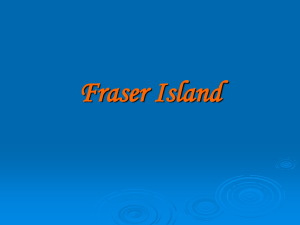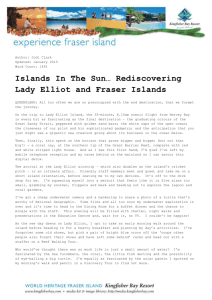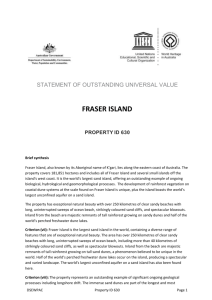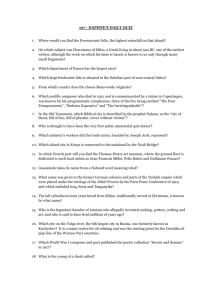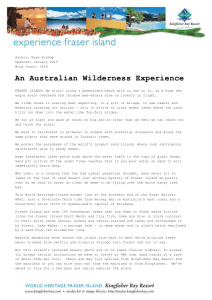Fraser Island (DOC - 95.5 KB) - Department of the Environment
advertisement
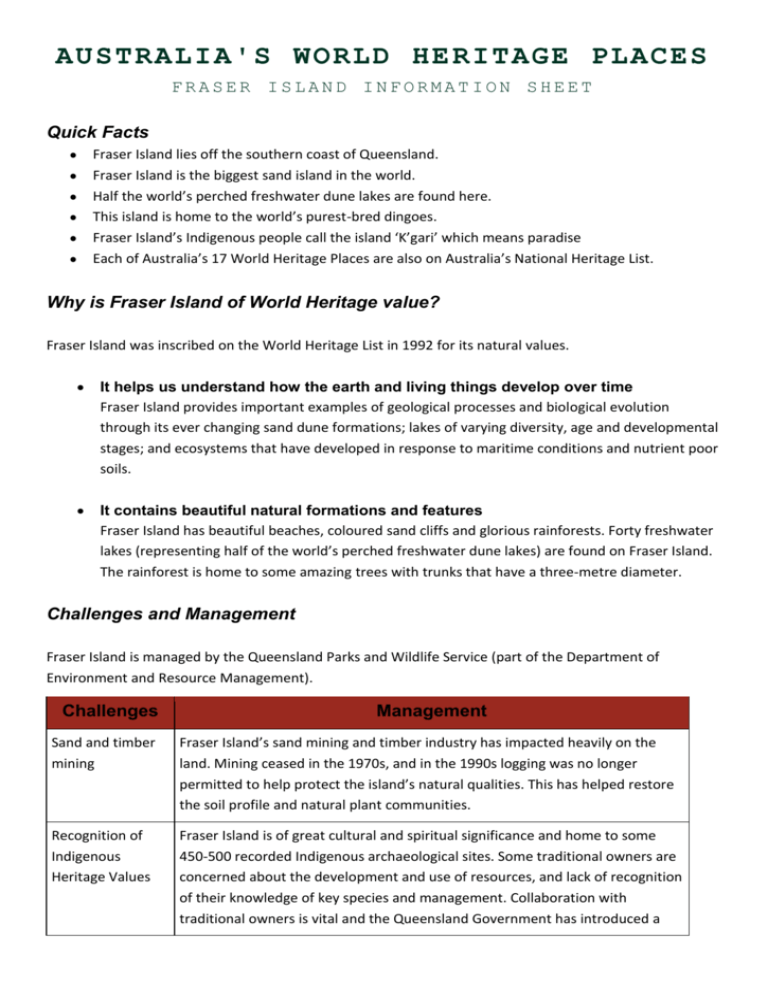
AUST RA L IA'S W O RLD HE R ITAG E P LACE S FRASER ISLAND INFORMATION SHEET Quick Facts Fraser Island lies off the southern coast of Queensland. Fraser Island is the biggest sand island in the world. Half the world’s perched freshwater dune lakes are found here. This island is home to the world’s purest-bred dingoes. Fraser Island’s Indigenous people call the island ‘K’gari’ which means paradise Each of Australia’s 17 World Heritage Places are also on Australia’s National Heritage List. Why is Fraser Island of World Heritage value? Fraser Island was inscribed on the World Heritage List in 1992 for its natural values. It helps us understand how the earth and living things develop over time Fraser Island provides important examples of geological processes and biological evolution through its ever changing sand dune formations; lakes of varying diversity, age and developmental stages; and ecosystems that have developed in response to maritime conditions and nutrient poor soils. It contains beautiful natural formations and features Fraser Island has beautiful beaches, coloured sand cliffs and glorious rainforests. Forty freshwater lakes (representing half of the world’s perched freshwater dune lakes) are found on Fraser Island. The rainforest is home to some amazing trees with trunks that have a three-metre diameter. Challenges and Management Fraser Island is managed by the Queensland Parks and Wildlife Service (part of the Department of Environment and Resource Management). Challenges Management Sand and timber mining Fraser Island’s sand mining and timber industry has impacted heavily on the land. Mining ceased in the 1970s, and in the 1990s logging was no longer permitted to help protect the island’s natural qualities. This has helped restore the soil profile and natural plant communities. Recognition of Indigenous Heritage Values Fraser Island is of great cultural and spiritual significance and home to some 450-500 recorded Indigenous archaeological sites. Some traditional owners are concerned about the development and use of resources, and lack of recognition of their knowledge of key species and management. Collaboration with traditional owners is vital and the Queensland Government has introduced a new heritage regime that recognises their rights and interests. Tourism Tourism inevitably creates challenges such as plant damage; loss of habitat through roads, camping, buildings and other infrastructure; and pollution. These issues are carefully managed and monitored to ensure sustainable tourism. On Fraser Island, tourists are encouraged to use boardwalks and marked tracks to reduce erosion and motor boats and jet skis cannot be used on lakes to minimise pollution and damage. Read more www.environment.gov.au/heritage/places/world/fraser/index.html
